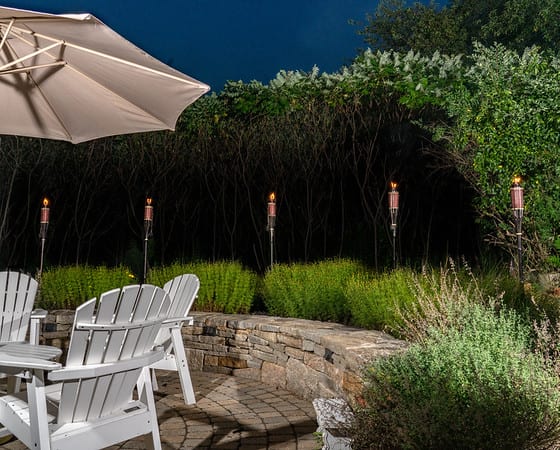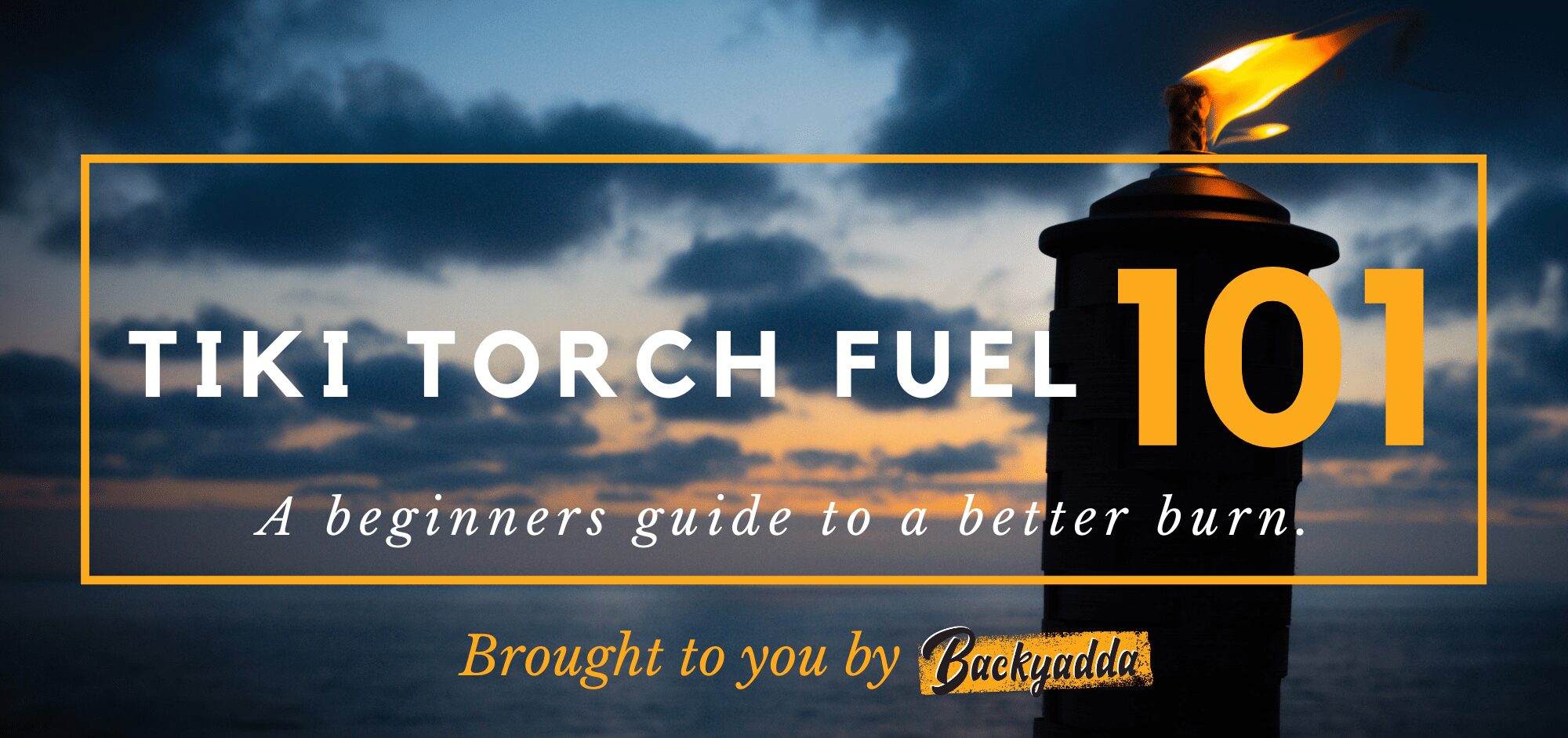
Welcome to the Backyadda family, full of entertainment enthusiasts and ambiance aficionados. Now that you’ve chosen arguably the best tiki torches on the market, you’re faced with the task of finding a fuel that will keep your guests entertained for hours. The secret? The better the fuel, the better the burn!
We don’t sell torch fuel. We also don’t want to see you get caught trying to entertain your friends and burning with embarrassment. No one wants torches that won’t light, won’t stay lit, or smoke so much it leaves your guests choking!
Okay, it’s mostly about the fuel, but before we get into everything you need to know about that, let’s just briefly mention the other important part you need to get right in order to enjoy a great evening surrounded by beautiful torchlight.
The wick! But it’s just a wick, right?
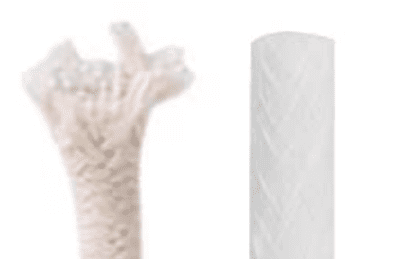
It’s important to note that our wick is the heart of your new torch, and there are three simple things that make all the difference: the wick material, the wick height, and the saturation level.
This wick is our pièce de résistance. It is made out of fiberglass, which is the preferred material for safe operation of any lamp or tiki torch. Many competitors use a cotton wick. While cost effective, the ends become charred which causes reduced wicking, shorter burn times,dirty burns, and constant wick maintenance and replacement.
The second important thing about wicks is the height. We urge you to make sure the wick is only sticking up ½ inch or less above your canister. This will ensure that it will last the lifetime of your torch. A wick sticking up too high will make even high-quality torch fuel smoke too much and burn too fast.
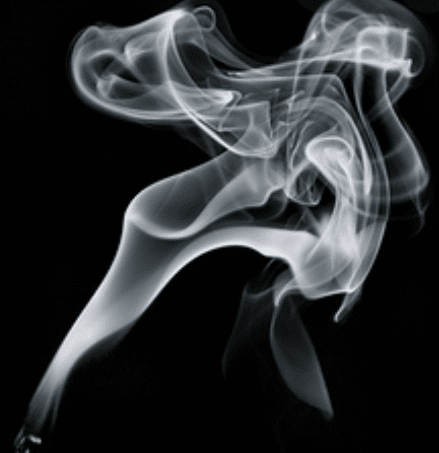
And what’s the key to making sure your torch lights the first time, every time? How do you ensure it doesn’t sputter with a weak flame and eventually flare out, if it even lights at all?
PRIME THE WICK!
The wick should fully absorb the oil before being lit. If the torch is mostly full of fuel, it can take less than a minute for the fuel to reach the top of the wick. If there is only a little fuel in the torch, this could take more than 20 minutes. Once the wick is saturated all the way and the top is wet, it will light immediately and stay lit with a strong flame until the fuel runs out.
(Any dry spots and it either won’t light or you’ll be burning the fuel faster than it can wick it up and you’ll never get a good flame.)
Okay, now back to the fuel.
When it comes to fuel, you get what you pay for. Cheap fuels will smoke too much even if you don’t have too much wick exposed. Cheap fuels can also clog even a high-end fiberglass wick, causing it to act like a cheap cotton wick. Cheap fuels can also simply smell bad…
Not All Fuels Are Created Alike
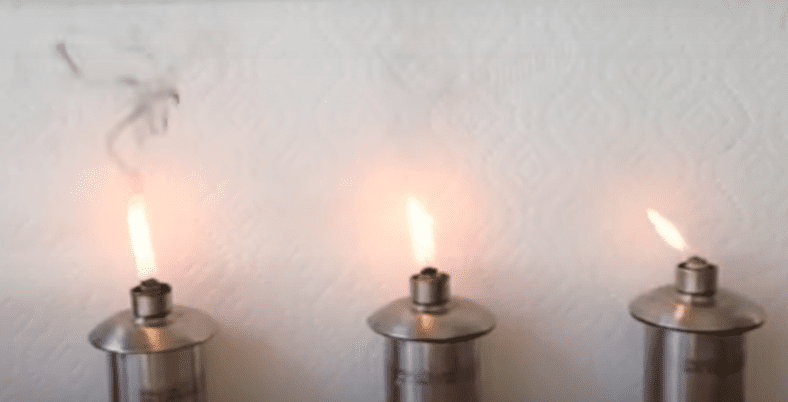
In a market saturated in fuels, it’s important for you to know there are a few types. Fuels can be petroleum based like Kerosene or the highly refined Paraffin, they can be Citronella Oil based, a combination of both, or even clean burning plant-based fuels. Fuel companies incorporate various oils such as citronella or eucalyptus to deter our pesky backyard insect neighbors. There are even fuels rated for indoor use. But which fuel is best for you, and your new Backyadda torches?
There are a bunch of fuels on the market, and here are the key factors to look for:

- Flash temperature
In short, this is an important factor in fire investigation. You want a high flash temperature for low flammability. For safety, you want a combustible fuel, not a flammable one. Make sure the flash point is over 140 degrees F, preferably over 200. - Burn Time
Just as you do, we want to get as much enjoyment out of a canister of fuel before refilling. - Wick Response and Life
As expected, we found lower quality fuels damaged the integrity of the wick, contaminating or clogging it. - Smokiness
Keep in mind your intended use for the torches. If the torches will be a short distance from your guests and you are trying to keep bugs away, the smoke actually helps repel the bugs so it’s more important to look for the bug repellant fuel than it is to worry about clean-burning fuel. But if you are buying fuel for tabletop torches to use while eating, then the smoke becomes a problem.
A few fuel companies stand out among the pack.
- Firefly– This company’s product integrity closely matches ours. During our testing, their fuels had some of the highest flash temperatures (remember: this means less flammability and higher safety). They recognize the benefits of additives such as Citronelle and Eucalyptus as an insect repellent. They utilize smoke free paraffin oil, boasting no odor and long burn times.
- Hyoola– Their Citronella fuel stood out to us because of not only their versatility (can be used both indoors and outdoors) and highlights a citronella scent that deters our mosquito enemies, but is completely odorless to humans. The range is unparalleled, keeping you safe in a 6.5’ radius. Dance the night away under the stars from within your invisible dome of protection. Keep in mind, it is not recommended to use their Citronella Lamp Oil inside as it produces a decent amount of smoke.
- Ner Mitzvah– This company is renown for their expert candle making, and it is no surprise they produce one of the most popular kosher citronella scented indoor/outdoor fuels. For entertaining guests outside over a drool-worthy meal, choose their citronella scented oil for a smoke-free, odorless event.
*BE SURE to only use approved torch or lamp oil. NEVER use gasoline, kerosene, or other flammable fuels! *
We hope to have illuminated this topic enough for you to make an informed decision on your fuel purchase. If you have any further questions, we urge you to reach out to us via email, .
Tag us on IG @5_star_north and show us how our torches light up your backyard! Make sure you follow us on Instagram so you can learn about all of our splurge-worthy products on Amazon!

